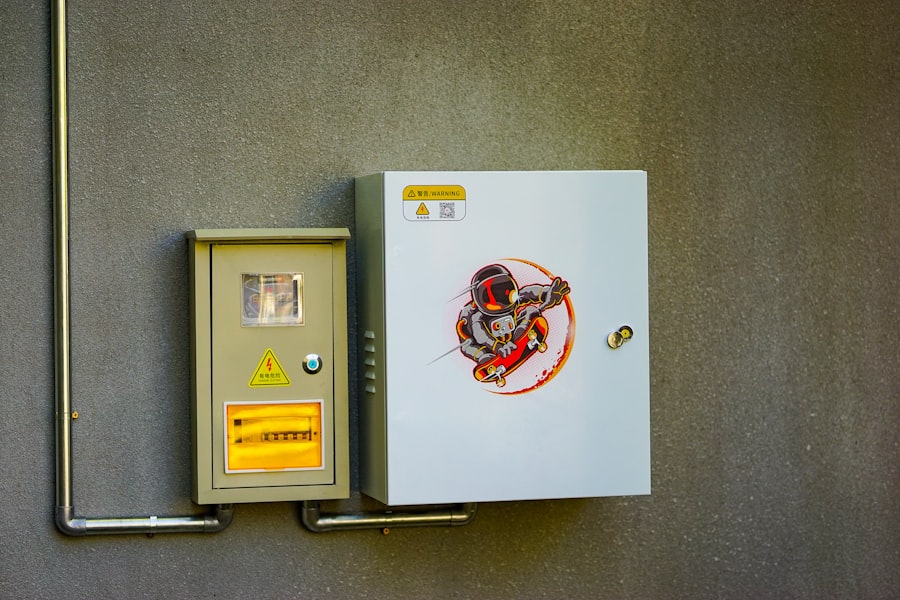The global shift towards renewable energy projects has gained unprecedented momentum in recent years, driven by the urgent need to address climate change and reduce dependence on fossil fuels. Renewable energy encompasses a variety of sources, including solar, wind, hydroelectric, geothermal, and biomass. These energy sources are characterized by their ability to regenerate naturally and their minimal environmental impact compared to traditional energy sources.
As nations strive to meet international climate agreements and local sustainability goals, the development of renewable energy projects has become a focal point for policymakers, investors, and communities alike. The transition to renewable energy is not merely an environmental imperative; it also represents a significant economic opportunity. The renewable energy sector has the potential to create millions of jobs, stimulate local economies, and foster technological innovation.
As the world grapples with the consequences of climate change, the urgency for clean energy solutions has never been more pronounced. This article delves into various aspects of renewable energy projects, including their costs, government incentives, financial considerations, economic benefits, challenges, successful case studies, and future outlooks.
Key Takeaways
- Renewable energy projects are increasingly vital for sustainable development and reducing carbon emissions.
- Initial costs of renewable technologies can be high, but government incentives help lower financial barriers.
- Careful financial planning is essential to manage risks and maximize returns on renewable energy investments.
- Renewable energy projects offer significant economic benefits, including job creation and energy cost savings.
- Despite challenges, the future outlook for renewable energy economics is positive, driven by technological advances and policy support.
The Cost of Renewable Energy Technologies
The cost of renewable energy technologies has seen a dramatic decline over the past decade, making them increasingly competitive with traditional fossil fuels. For instance, the levelized cost of electricity (LCOE) for solar photovoltaic (PV) systems has dropped by over 80% since 2010, while onshore wind costs have decreased by approximately 50% during the same period. This trend is largely attributed to advancements in technology, economies of scale in manufacturing, and increased competition in the energy market.
As a result, many countries are now able to generate electricity from renewable sources at prices that are not only affordable but also sustainable in the long term. However, while the initial capital costs for renewable energy projects can be substantial, it is essential to consider the long-term savings associated with these technologies. Unlike fossil fuel-based power generation, which is subject to volatile fuel prices, renewable energy sources offer predictable and stable pricing structures.
For example, once a solar or wind farm is operational, its operational costs are relatively low, primarily involving maintenance and management. This stability can provide significant financial advantages over time, making renewable energy an attractive option for both public and private investors.
Government Incentives and Subsidies for Renewable Energy Projects

Governments around the world have recognized the importance of fostering renewable energy development through various incentives and subsidies. These financial mechanisms are designed to lower the barriers to entry for renewable energy projects and encourage investment in clean technologies. Common forms of government support include tax credits, grants, feed-in tariffs, and power purchase agreements (PPAs).
For instance, in the United States, the Investment Tax Credit (ITC) allows solar project developers to deduct a significant percentage of their installation costs from their federal taxes, effectively reducing the upfront financial burden. In addition to direct financial incentives, governments often implement regulatory frameworks that promote renewable energy adoption. Renewable Portfolio Standards (RPS) require utilities to obtain a certain percentage of their energy from renewable sources, thereby creating a guaranteed market for clean energy projects.
Countries like Germany have successfully utilized feed-in tariffs to ensure that renewable energy producers receive fixed payments for the electricity they generate over a specified period. Such policies not only stimulate investment but also help stabilize the market for renewable energy technologies.
Financial Considerations for Renewable Energy Investments
Investing in renewable energy projects involves a complex array of financial considerations that can significantly impact their viability and success. One of the primary factors is the availability of financing options. Traditional bank loans may not always be accessible for renewable projects due to perceived risks or lack of collateral.
As a result, alternative financing mechanisms such as green bonds, crowdfunding platforms, and public-private partnerships have emerged as viable options for raising capital. Moreover, understanding the financial metrics associated with renewable energy investments is crucial for stakeholders. Key performance indicators such as internal rate of return (IRR), net present value (NPV), and payback period provide insights into the potential profitability of a project.
For example, a project with a high IRR indicates that it is expected to generate substantial returns relative to its initial investment. Investors must also consider factors such as project location, resource availability, and regulatory environment when evaluating potential investments in renewable energy.
Economic Benefits of Renewable Energy Projects
The economic benefits of renewable energy projects extend far beyond mere job creation; they encompass a wide range of positive impacts on local and national economies. One of the most significant advantages is the potential for job creation across various sectors. According to the International Renewable Energy Agency (IRENA), the global renewable energy sector employed over 11 million people in 2018, with numbers expected to rise as investments continue to flow into clean technologies.
These jobs span manufacturing, installation, maintenance, and research and development roles. Additionally, renewable energy projects can stimulate local economies by attracting investment and fostering innovation. For instance, communities that host wind farms or solar installations often experience increased economic activity through local spending on goods and services related to project development and maintenance.
Furthermore, renewable energy can enhance energy security by reducing reliance on imported fossil fuels, thereby keeping more money within local economies. This localized economic activity can lead to improved infrastructure and services that benefit residents beyond just energy production.
Challenges and Risks in Financing Renewable Energy Projects

Despite the numerous advantages associated with renewable energy projects, financing them is not without its challenges and risks. One significant hurdle is the inherent uncertainty surrounding regulatory frameworks and government policies. Changes in political leadership or shifts in public sentiment can lead to abrupt alterations in incentives or support mechanisms for renewable energy projects.
This unpredictability can deter investors who seek stable environments for their capital. Another challenge lies in the technological risks associated with renewable energy systems.
For example, solar panels may degrade over time or require replacement parts that are not readily available in certain regions. Investors must carefully assess these risks when considering financing options and project viability.
Case Studies of Successful Renewable Energy Projects
Examining successful case studies can provide valuable insights into best practices and strategies for implementing renewable energy projects effectively. One notable example is Denmark’s wind energy sector, which has become a global leader in wind power generation. The country has invested heavily in both onshore and offshore wind farms, resulting in wind accounting for over 40% of its total electricity consumption as of 2020.
Denmark’s commitment to long-term planning and supportive policies has enabled it to create a robust wind industry that not only meets domestic needs but also exports technology and expertise worldwide. Another compelling case study is California’s solar energy initiatives. The state has implemented ambitious policies aimed at increasing solar capacity through programs like the California Solar Initiative (CSI) and net metering regulations that allow homeowners to sell excess electricity back to the grid.
As a result, California has become a national leader in solar installations, with over 1 million homes equipped with solar panels by 2020. This success story highlights how targeted government support combined with public awareness campaigns can drive widespread adoption of renewable technologies.
Future Outlook for the Economics of Renewable Energy
The future outlook for the economics of renewable energy appears promising as technological advancements continue to drive down costs while increasing efficiency. Innovations such as battery storage technology are poised to revolutionize how renewable energy is integrated into existing power grids by addressing intermittency issues associated with solar and wind generation. As storage solutions become more affordable and widely adopted, they will enhance the reliability of renewable sources and further solidify their role in meeting global energy demands.
Moreover, as climate change concerns intensify and international agreements like the Paris Accord gain traction, there will likely be an increased push for decarbonization across all sectors of the economy. This shift will create new opportunities for investment in renewable technologies as businesses seek to align with sustainability goals and reduce their carbon footprints. The convergence of technological innovation, supportive policies, and growing public awareness will undoubtedly shape the future landscape of renewable energy economics, paving the way for a cleaner and more sustainable world.
In the context of renewable energy projects, understanding the economic implications is crucial for their successful implementation. A related article that provides insights into making informed decisions in technology investments is available at How to Choose a Laptop for Students. This article discusses the importance of evaluating costs and benefits, which parallels the considerations necessary for assessing renewable energy initiatives.
FAQs
What are renewable energy projects?
Renewable energy projects involve the development and implementation of energy systems that generate power from renewable resources such as solar, wind, hydro, geothermal, and biomass. These projects aim to produce sustainable energy with minimal environmental impact.
Why is the economics of renewable energy important?
Understanding the economics of renewable energy is crucial for assessing the feasibility, cost-effectiveness, and long-term benefits of renewable energy projects. It helps investors, policymakers, and developers make informed decisions about funding, incentives, and project design.
What factors influence the cost of renewable energy projects?
Key factors include the type of technology used, project scale, location, availability of resources (like sunlight or wind), capital costs, operation and maintenance expenses, financing terms, and government policies or subsidies.
How do renewable energy projects compare economically to fossil fuel projects?
While renewable energy projects often have higher upfront capital costs, they typically have lower operating costs and no fuel expenses. Over time, many renewable projects become more cost-competitive due to declining technology costs and environmental regulations affecting fossil fuels.
What role do government incentives play in renewable energy economics?
Government incentives such as tax credits, grants, feed-in tariffs, and subsidies can significantly reduce the financial burden of renewable energy projects, making them more attractive to investors and accelerating adoption.
What is the typical payback period for renewable energy projects?
The payback period varies depending on the technology, project size, location, and incentives but generally ranges from 5 to 15 years. Advances in technology and supportive policies continue to shorten this period.
How do renewable energy projects impact local economies?
Renewable energy projects can create jobs, stimulate local businesses, increase tax revenues, and promote energy independence, contributing positively to local economic development.
What are the risks associated with investing in renewable energy projects?
Risks include resource variability (e.g., inconsistent wind or sunlight), regulatory changes, technological uncertainties, financing challenges, and potential environmental or social impacts.
How is the return on investment (ROI) calculated for renewable energy projects?
ROI is calculated by comparing the net financial gains from the project (energy savings, revenue from selling electricity) against the total investment costs, often considering the project’s lifespan and discount rates.
What trends are shaping the future economics of renewable energy?
Trends include declining technology costs, improved energy storage solutions, increased efficiency, evolving policy frameworks, and growing corporate and consumer demand for clean energy.

